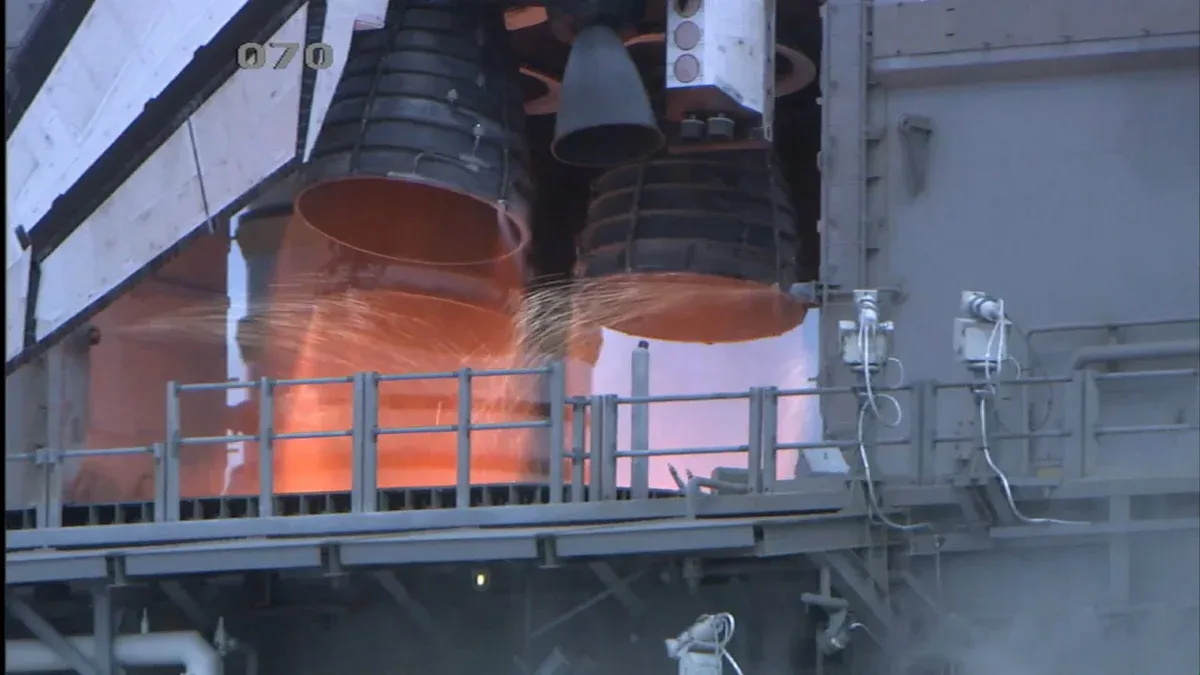
Rocket nozzles endure extreme temperatures during launches. You need materials that can handle this intense heat without failing. طلاء التاي سي stands out with its remarkable thermal resistance and durability. Its high melting point and oxidation resistance ensure rocket nozzles remain reliable even in the most demanding conditions.
المداخل الرئيسية
- تاكو keeps rocket nozzles safe from very high heat.
- Its ability to resist melting and rusting stops harm to parts.
- Using coatings like TaC makes rockets safer and cheaper to fix.
The Challenge of Extreme Heat in Rocket Nozzles

Why Rocket Nozzles Face Extreme Heat
Rocket nozzles experience extreme heat because of the combustion process. When fuel burns in the rocket engine, it generates gases at temperatures exceeding 5,000°F (2,760°C). These gases exit the nozzle at supersonic speeds, creating intense thermal and mechanical stress. The nozzle must withstand this heat while maintaining its shape and functionality. Without proper materials, the nozzle would fail during launch.
The design of rocket nozzles also contributes to the heat challenge. Their narrow throat accelerates gas flow, concentrating heat in a small area. This makes the nozzle’s surface vulnerable to damage. You need advanced materials like تاكو to handle these conditions effectively.
Consequences of Inadequate Heat Protection
Inadequate heat protection can lead to catastrophic failures. A damaged nozzle may lose its structural integrity, causing uneven thrust. This can destabilize the rocket’s trajectory. In severe cases, the rocket could fail to reach its destination.
Heat damage also reduces the lifespan of rocket components. Frequent repairs or replacements increase costs and delay missions. By using materials with high thermal resistance, you can avoid these issues. تاكو provides a reliable solution, ensuring the nozzle performs under extreme conditions.
Tip: Investing in advanced coatings not only improves performance but also enhances safety and cost-efficiency in aerospace missions.
How TaC Coating Works

Composition and Properties of TaC Coating
TaC Coating, short for Tantalum Carbide Coating, is made from a combination of tantalum and carbon atoms. This unique material forms a dense, ceramic-like layer that can withstand extreme conditions. Tantalum, a rare metal, contributes to the coating’s high melting point, while carbon enhances its strength and durability. Together, they create a compound that resists heat, oxidation, and wear.
One of the most remarkable properties of TaC Coating is its melting point, which exceeds 7,000°F (3,870°C). This makes it one of the most heat-resistant materials known to science. Additionally, it has excellent thermal conductivity, allowing it to distribute heat evenly across the nozzle’s surface. This prevents localized damage and ensures the nozzle remains intact during operation.
Another key feature is its oxidation resistance. When exposed to high temperatures, many materials react with oxygen in the air, leading to corrosion. TaC Coating forms a protective barrier that prevents this reaction, extending the lifespan of rocket nozzles. Its hardness also protects against mechanical wear, ensuring the nozzle maintains its shape and performance over multiple launches.
ملاحظة: The combination of tantalum and carbon gives TaC Coating its exceptional properties, making it an essential material in aerospace engineering.
Mechanisms of Heat Resistance
TaC Coating protects rocket nozzles by acting as a thermal shield. When exposed to extreme heat, the coating absorbs and dissipates the energy, preventing it from reaching the underlying material. This process reduces the risk of structural damage and ensures the nozzle performs reliably.
The coating’s high melting point plays a crucial role in its heat resistance. Even at temperatures that would melt most metals, TaC Coating remains stable. This stability allows it to endure the intense heat generated during rocket launches without breaking down.
Its thermal conductivity also contributes to its effectiveness. By spreading heat evenly, the coating minimizes the formation of hot spots. These hot spots can weaken the nozzle and lead to failure. With TaC Coating, you can ensure consistent performance under extreme conditions.
Oxidation resistance is another important mechanism. During a rocket launch, the nozzle is exposed to high-temperature gases containing oxygen. Without protection, these gases can corrode the nozzle’s surface. TaC Coating prevents this by forming a barrier that blocks oxygen from reaching the underlying material.
Tip: By understanding how TaC Coating works, you can appreciate its role in improving the safety and reliability of rocket nozzles.
Benefits and Future of TaC Coating in Aerospace
Enhanced Performance and Reliability
TaC Coating significantly improves the performance of rocket nozzles. Its ability to withstand extreme temperatures ensures that the nozzle remains intact during launches. You can rely on this coating to protect the nozzle from heat damage, which helps maintain consistent thrust. This consistency is crucial for the success of space missions.
The durability of TaC Coating also enhances reliability. It resists wear and tear caused by high-speed gas flow and mechanical stress. This means you can use the same nozzle for multiple launches without worrying about frequent repairs. By reducing maintenance needs, TaC Coating saves time and resources, making space exploration more efficient.
Another advantage is its role in improving safety. A reliable nozzle reduces the risk of mission failure, protecting both equipment and crew. When you use TaC Coating, you ensure that the rocket performs as expected, even under the most challenging conditions.
Did You Know? The exceptional properties of TaC Coating make it one of the most sought-after materials in aerospace engineering.
Innovations and Potential Applications
The مستقبل التكتل in aerospace looks promising. Researchers are exploring ways to enhance its properties further. For example, combining TaC Coating with other advanced materials could improve its thermal resistance and durability. These innovations could lead to even more reliable rocket components.
You might also see TaC Coating being used in other areas of aerospace engineering. For instance, it could protect heat shields on spacecraft during re-entry. Its ability to resist oxidation and extreme heat makes it ideal for such applications.
Beyond aerospace, TaC Coating has potential in industries like energy and manufacturing. Its heat resistance could benefit turbines and other high-temperature machinery. As technology advances, you can expect to see more creative uses for this remarkable material.
Tip: Staying informed about advancements in TaC Coating technology can help you understand its growing impact on various industries.
TaC Coating represents a breakthrough in aerospace engineering. It protects rocket nozzles from extreme heat, ensuring reliable performance during launches. You can count on its unique properties, like heat resistance and durability, to enhance mission success. As technology advances, this coating could find broader applications, shaping the future of aerospace and beyond.
FAQ
What makes TaC Coating better than other materials for rocket nozzles?
TaC Coating offers unmatched heat resistance, durability, and oxidation protection. Its high melting point ensures reliable performance during extreme conditions, outperforming most traditional materials.
Can TaC Coating be reused after multiple launches?
Yes, its durability allows reuse. TaC Coating resists wear and tear, reducing the need for frequent repairs and extending the lifespan of rocket nozzles.
Is TaC Coating used outside aerospace engineering?
Absolutely! Industries like energy and manufacturing use it for high-temperature machinery, such as turbines, due to its exceptional heat resistance and durability.
Tip: Explore how TaC Coating innovations could impact industries beyond aerospace. Its versatility might surprise you!


